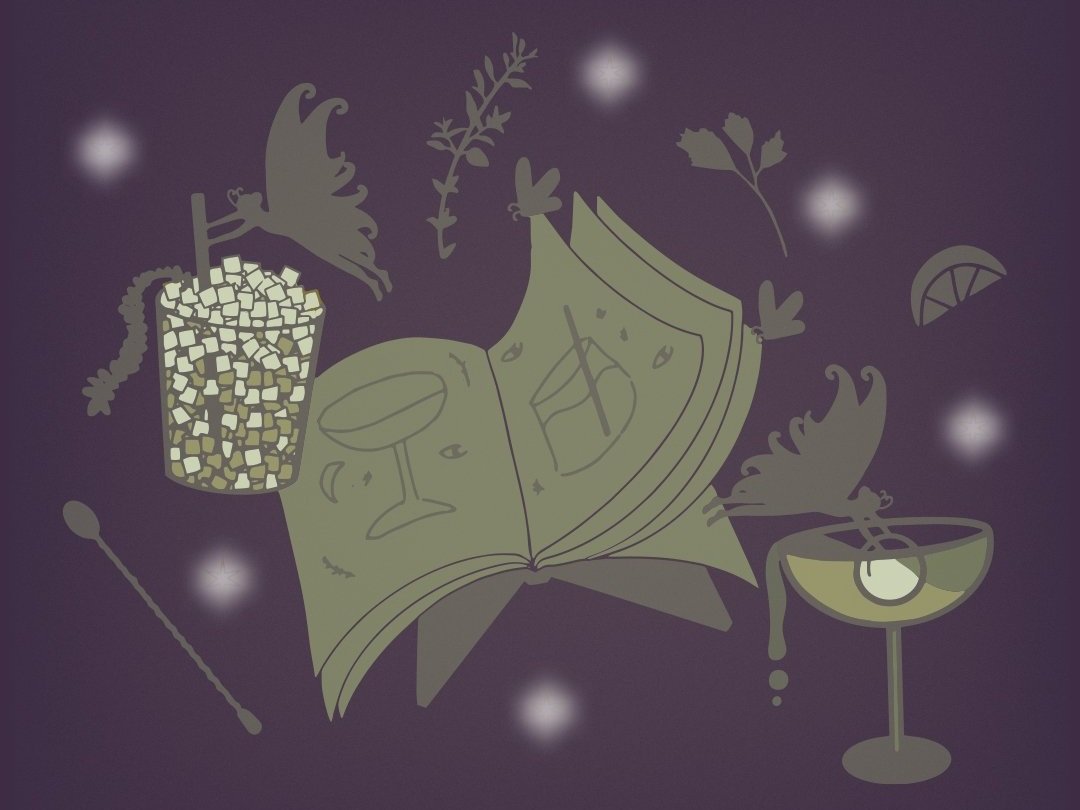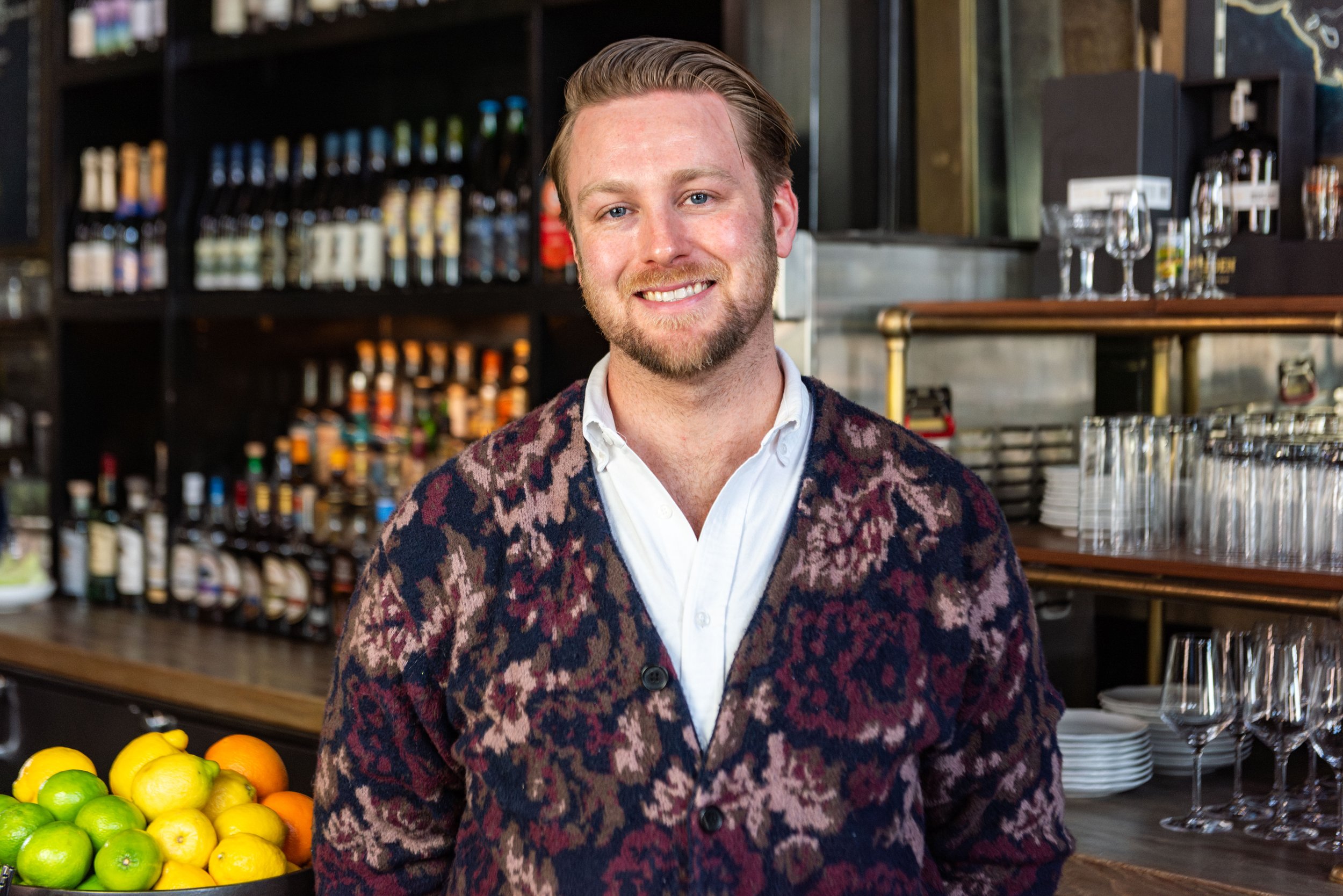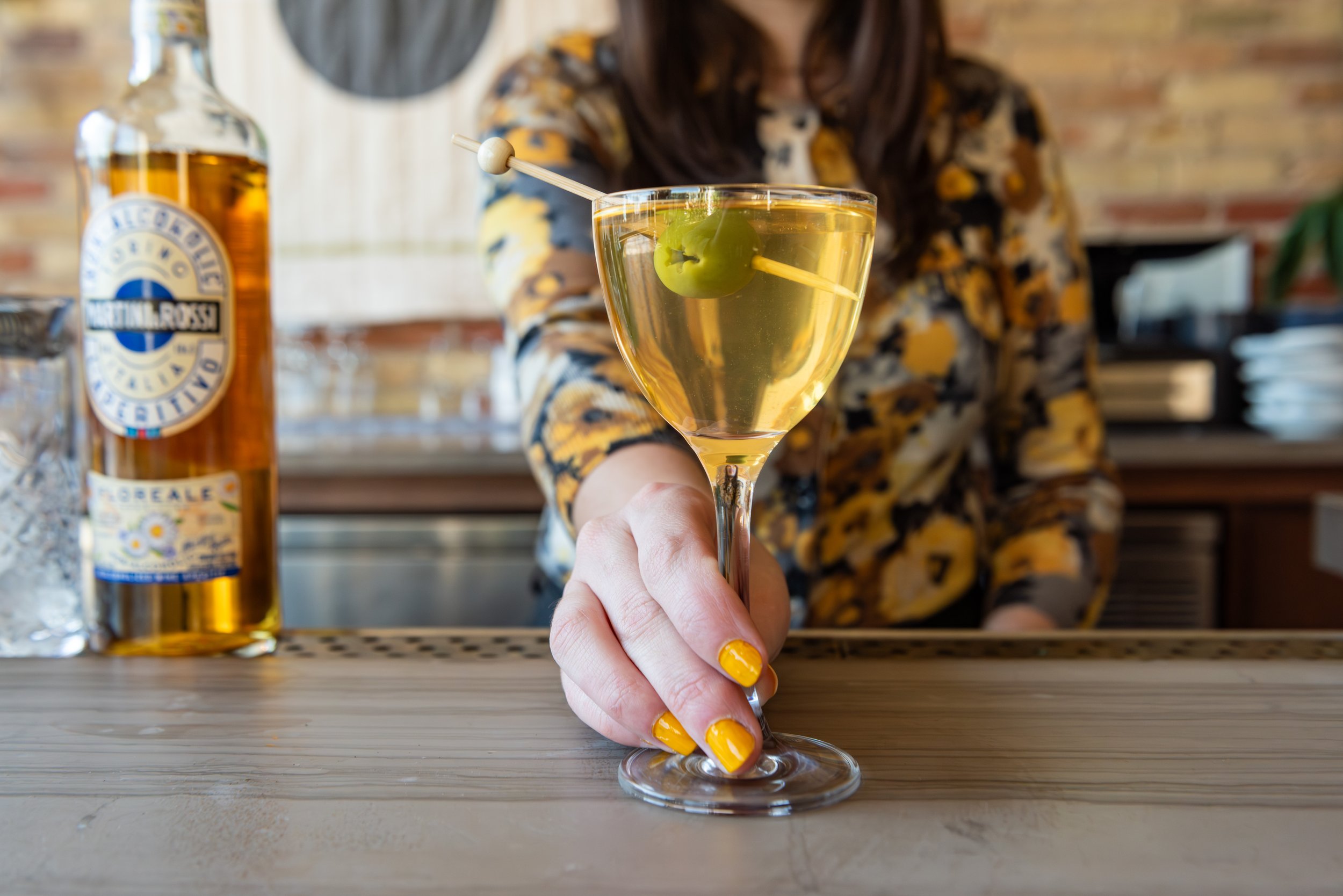Spirits Of The Well
Dive into the world of Greece’s goddess of magic with mystical cocktails from Bartender Lou Charbonneau of Hecate.
illustration: rachel Krohn
Down a clandestine staircase in Boston’s Back Bay is an intimate, cave-like, candle-lit bar, where guests are sipping on the mysteries of antiquity and taking a plunge into the mythical and mystical. Inside, the mood is dark and enigmatic. Through a chained curtain, a single light dangles over the black marble bar, luring the eyes of patrons to the modern day Charon guiding their journey with shaker in hand.
This is Hecate, named after the feared and revered Greek goddess of crossroads, magic, and the moon. “[We are] reaching to this pan-mysticism for the drinks,” says Beverage Director Lou Charbonneau, who is dusting off hermetic texts, casting spells, and concocting cocktails inspired by fables, legends, and folklore. From Greek mythology to Eastern philosophy, “it's not just stuff in a glass.” Charbonneau draws on “materials that are fun and educational but parlay into story and flavor.”
The menu itself—a handmade, leather-bound tome—is designed like a grimoire, a book of spells, with eye-catching illustrations of the cocktails spread throughout. “Presentation is important,” says Charbonneau, “it's an experience going in [to Hecate]. There isn't anything like this in Boston. We wanted to have something more like a European-style cocktail bar.”
Crafting the drinks meant taking a deep dive into the obscure. The process starts by “picking concepts, playing with story and ingredients, looking at spirits, and then running down the spread of each drink and how that all looks in totality” on the menu. The goal is to evoke and reference these otherworldly narratives without disregarding the quality of the cocktails themselves. It’s “not just slapping a name on it. It needs to be a well-engineered cocktail,” says Charbonneau.
There is no one formula for creation. The cocktails at Hecate are constructed as a result of Charbonneau’s research into these extraordinary tales. Recently, a cocktail based around the fae legends of the United Kingdom found its footing when Charbonneau was “going through how people wrote about interfacing with the fae realm and the things that they would leave out for them as offerings.” The list of fairy fodder included spring vegetables, berries, apples, thyme, and milk and honey, to name a few. These ingredients, as they often do, led Charbonneau to a centralizing archetype: the bramble. Using the English cocktail as a guiding light, he found a way to bring the components together. Served on a fairy mound coaster, The Secret Commonwealth—named after the seventeenth century text by Scottish folklorist Robert Kirk detailing the intricacies of the fairy world—features snap pea-infused gin, milk-washed Good Vodka sweetened with honey, green apple-infused verjus, thyme, elderberry cordial, and elderflower and is accompanied by one last offering to the fae, a piece of jam on toast.
The Secret Commonwealth: Snap Pea-Infused Gin, Milk-Washed Good Vodka, Green Apple-Infused Verjus, Honey, Thyme, Elderberry, Elderflower, Berry Jam Toast
Beverage Director Lou Charbonneau
The Emerald Tablet, a celebrated and defining hermetic text attributed to Hermes Trismegistus, was the basis for a cocktail of the same name. It was “the premier alchemical text through the ages and the foundation for hermetic wisdom,” says Charbonneau, and “the precursor to modern hard science and chemistry.” The mystifying artifact and its even more mythical author coaxed Charbonneau down a rabbit hole, where he learned that Trismegistus would’ve traversed areas of East Africa, the Middle East, and parts of the Mediterranean. The flavors of the region became the foundation for the cocktail, which includes Procera African gin, fig leaf-infused mastiha, ras el hanout honey, black lime, and aquafaba.
It is more than just smoke and mirrors. The cocktails and the stories that accompany them create room for real immersion and conversation. “I had a gentleman come into the bar and order the Emerald Tablet. He seemed super excited,” says Charbonneau. “He said he came here because he saw we had a drink called the Emerald Tablet. He had done his PhD at Boston College in theological studies and translated the Emerald Tablet from Coptic for his dissertation. That’s such a rare thing for me, and to experience that is so freaking cool.”
Now, people come to the bar and leave effigies and offerings to Hecate and other deities, even dropping off little trinkets and statues for Charbonneau and his team. The engagement with mythology and magic, while exciting and mysterious, is even more alluring because it brings guests into the story. “Story is the biggest thing for us as humans, even if we don't recognize it.” As the bar brings attention to mythical narratives and the origins of those tales, it somehow becomes a part of them, turning intangible fairytales into something guests can taste.








